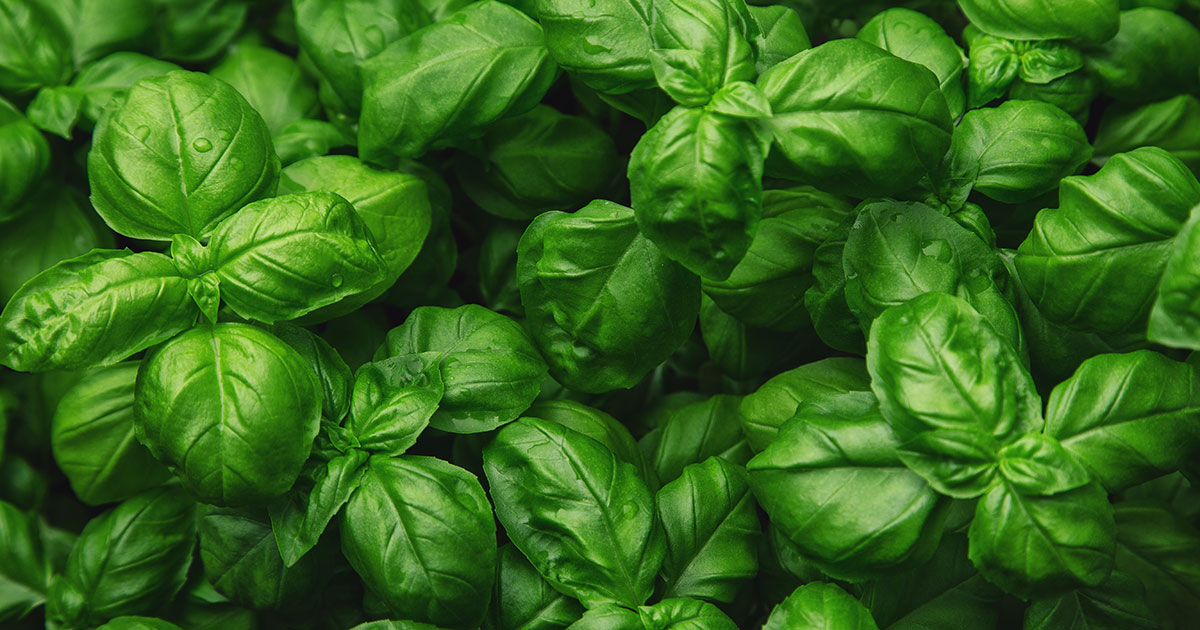Usage
- Basil holds a place of honour in the Italian kitchen. Seafood and poultry dishes, red sauces, pizza, pasta with vegetables—we find that almost any dish can benefit from the addition of this versatile herb.
- It’s not only Italian food that benefits from basil. Tomato-based dishes the world over—salads, salsas, pizzas, soups and slow-cooked stews—benefit from its fragrant aroma and deep green colour. We like tossing a few basil leaves into tomato soup and including them in baked-egg frittatas for a brunch buffet.
- Today’s professional chefs are finding many new and interesting uses for basil. You’ll find it in desserts and sweets, and even in ice cream. Next time you make shortbread cookies, try adding lemon zest and a hint of basil. You’ll love it!
Perfect Partners
- Tomatoes and cheese, basil and olive oil—two matches made in heaven! Picture the classic Caprese salad of tomato and mozzarella, dressed in olive oil. It’s the flecks of green basil that bring the dish to life. Same with a traditional Greek salad of chunky tomato, cucumber, onion, olives and feta cheese. Basil and olive oil bring the flavours together in perfect harmony.
- Our basil partners well with all the Mediterranean herbs—marjoram, dill, oregano and thyme. Whether you’re whipping up a salad dressing, marinade or spice rub, you can’t go wrong when you combine two or three (or all!) of these herbs. Add a splash of olive oil, maybe some lemon, plus salt and pepper, and you’re good to go.
- In a pinch for a tempting but easy vegetarian meal? Basil to the rescue! Select several vegetables—whatever’s in season—say eggplant, zucchini and sweet bell peppers. Sprinkle them with basil, salt, pepper and drizzle with olive oil. Then roast them at high heat until brown. Top them with the best quality Parmesan cheese you can find. Even the meat lovers at your table will ask for seconds!
Substitutes
Q: If I don’t have basil leaves on hand, what makes a good substitute?
A: Look to the family of Mediterranean herbs for a number of good stand-ins for basil. For dishes with longer cooking times, oregano leaves can be substituted in equal measure. So can Italian seasoning, which combines basil with marjoram, thyme, rosemary, oregano and other herbs. Tarragon leaves are another possibility. We’ve found that this herb captures the slight licorice flavour that basil brings to the table. Of course you can always substitute fresh basil leaves, using one tablespoon chopped fresh herb for each teaspoon of dried.
History/Fun Facts
We think of basil as the ultimate Italian herb. But it’s actually native to India and the Near East. Other varieties of the herb, like peppery Thai basil, hold a place of honour in southeast Asian cuisines. But it is Mediterranean basil that has captured the heart of the Canadian table. From its roots in the East, basil took on a more romantic guise as it moved west. Ancient Greeks called it the “royal herb.” To Romans, it symbolized love and fertility. Italian suitors proclaimed their love by sporting sprigs of basil in their hair. The love affair continues today in our ongoing romance with all things Mediterranean. You’ll find basil in everything from summer cocktails and desserts to wintry sauces and stews. We think its continued popularity is well deserved.







